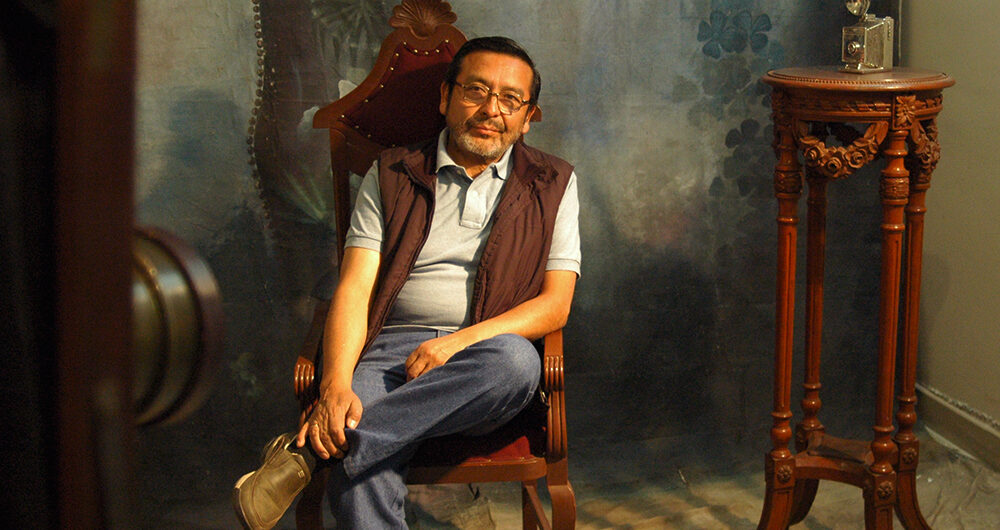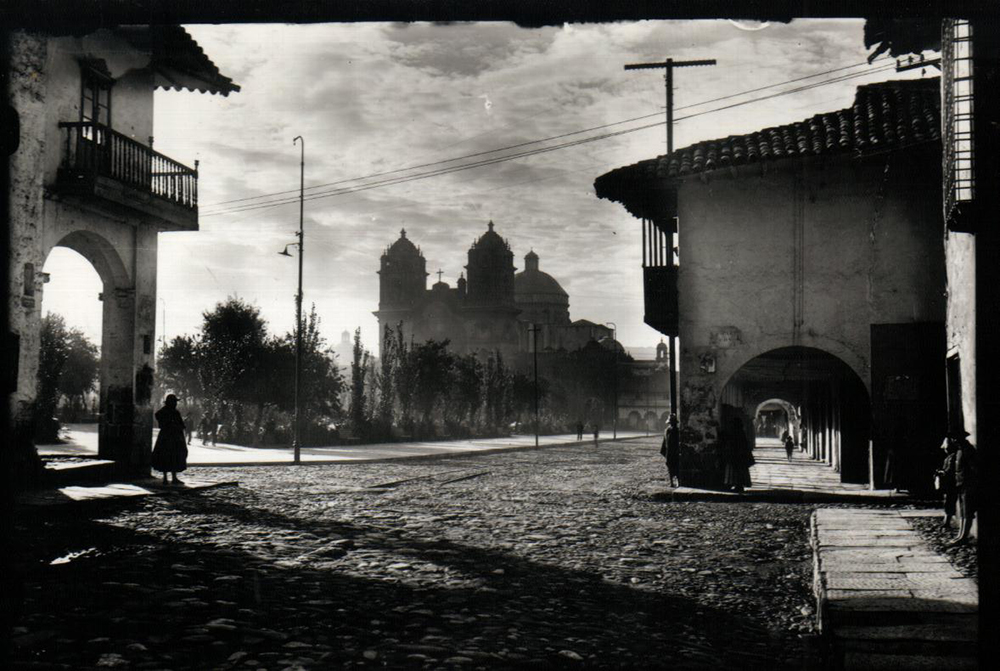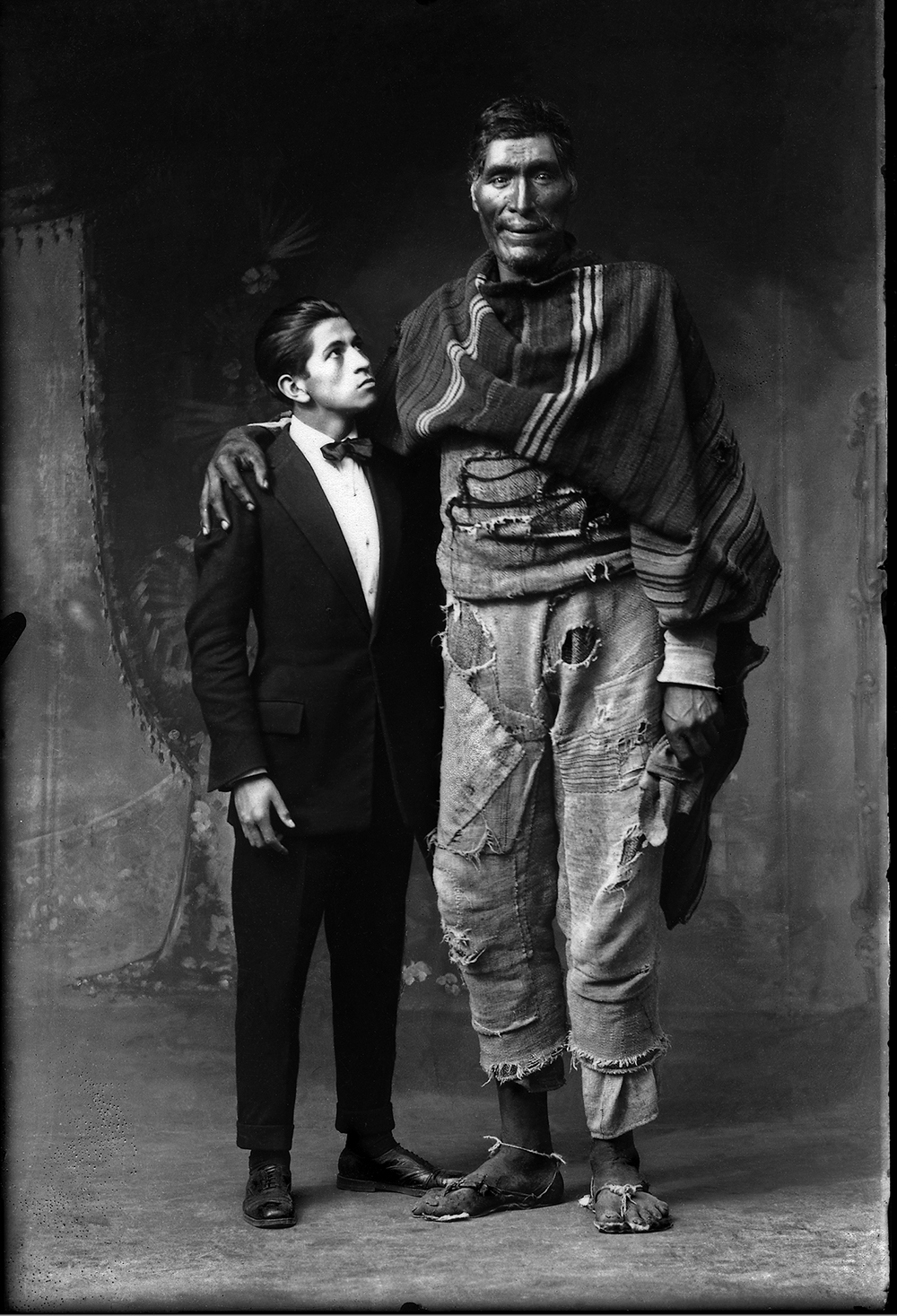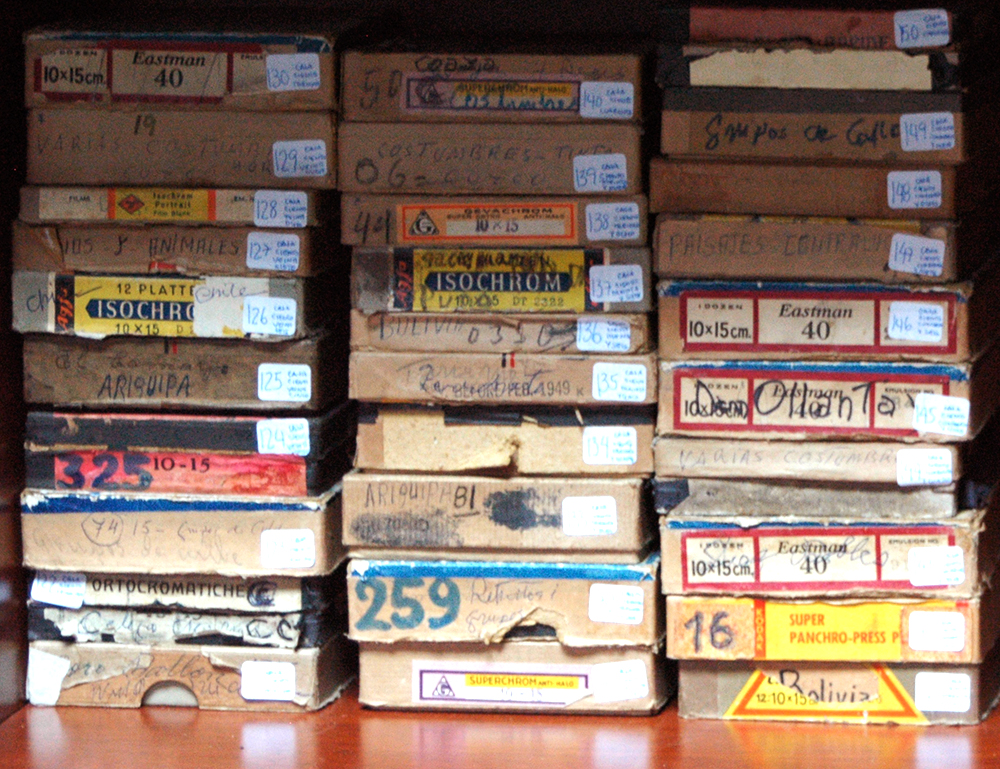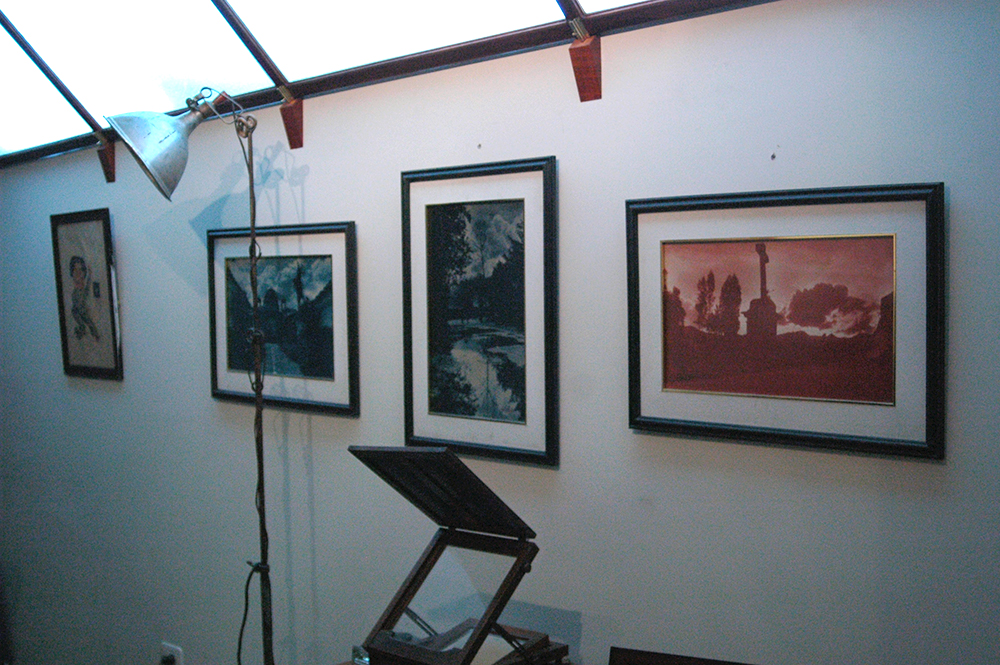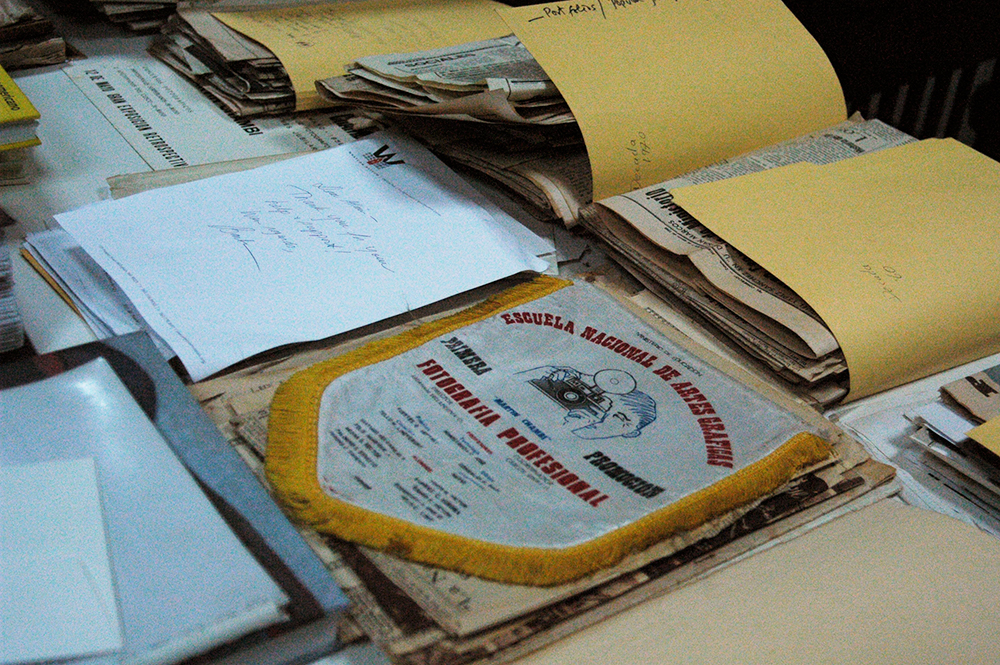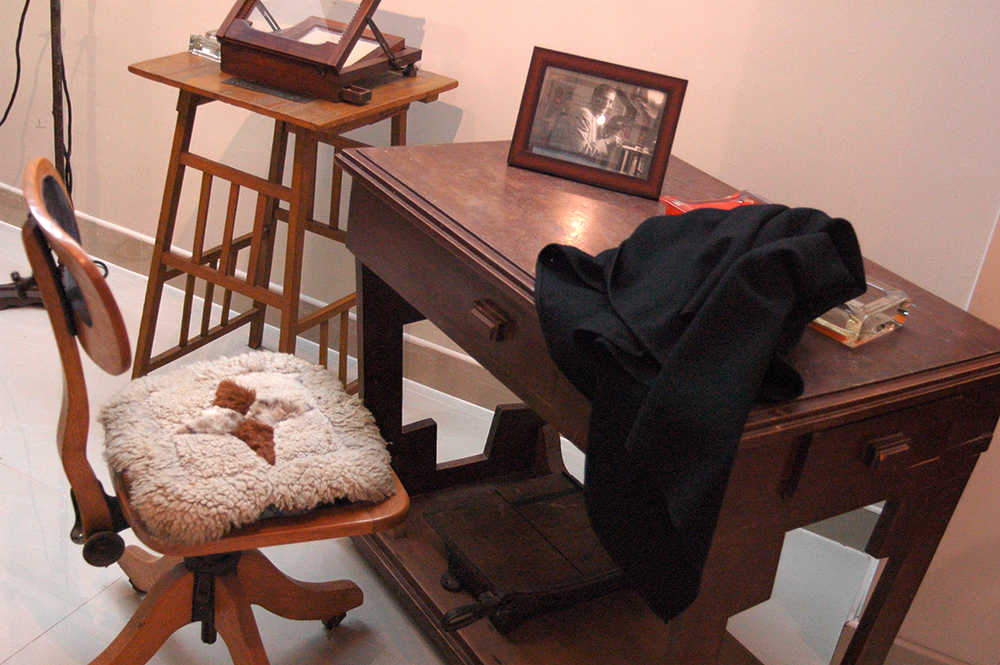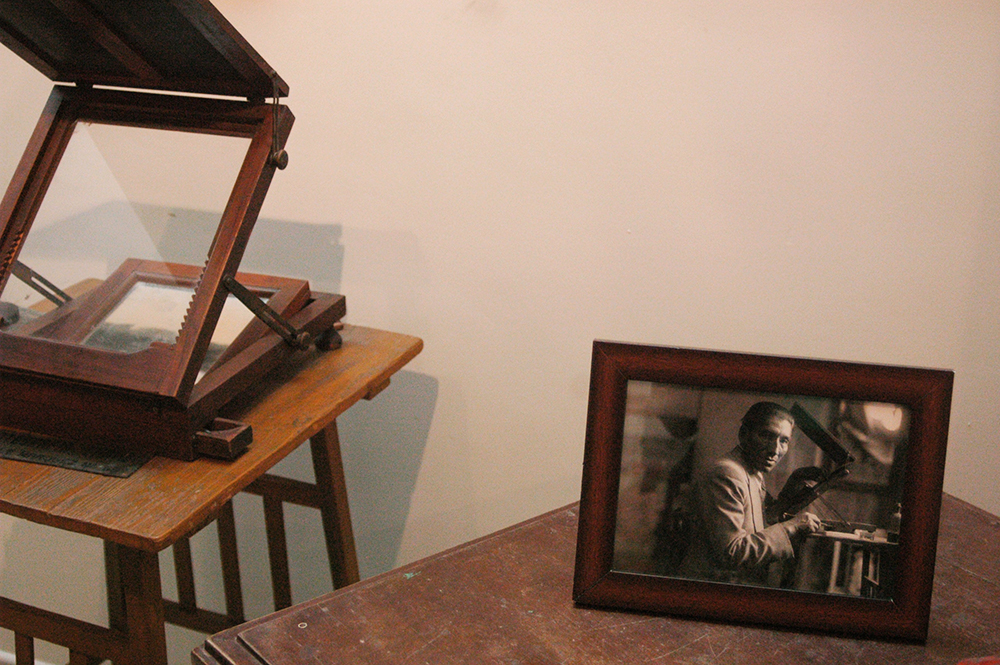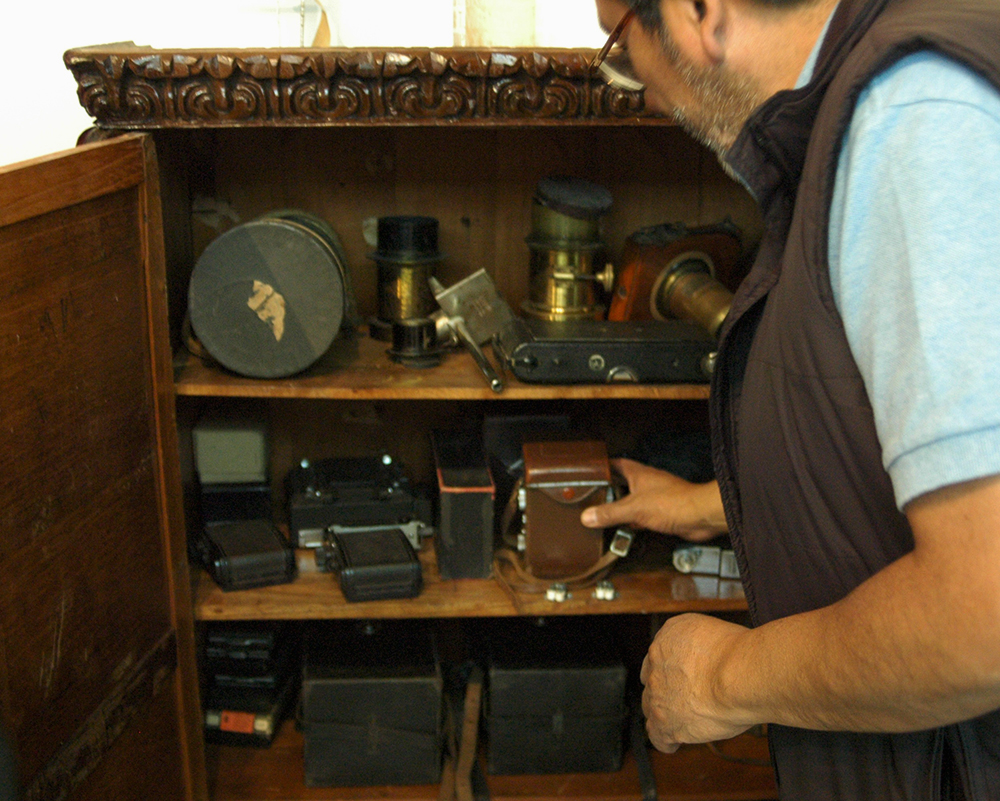Chambi Archives: A Snapshot of the Past
On a quiet side street in the city of Cusco , you will find the archives of Martín Chambi, one of the first indigenous photographers of Latin America to gain international acclaim. His photographs, which range from some of the first mystic shots of Machu Picchu to a striking portrait of the giant of Llusco, are widely known and inevitably leave a lasting impression on viewers. It is very likely that you have, at some point or another, seen one of his photos without realizing it. Martín’s grandson, Teo Allain Chambi (pictured above), is the keeper of this precious collection of some 30,000 photo negatives on glass plates, spanning from 1917-1970, which can be visited by special arrangement with Aracari.
Visiting Martin Chambi Archives in Cusco
Visting Cusco I had the opportunity to check out the Martin Chambi Archives with Aracari and found myself sitting across from Teo Allain on a bench that had originally belonged to his grandfather’s studio. Books about Martín and his works layered the top of the trunk between us. I flipped through them while listening to Teo narrate an overview of his grandfather’s history. Teo is one of Aracari’s specialist guides who offers guests a unique an privileged insight into the work and life of photographer Martin Chambi.
The Life of Martin Chambi
In 1891 Martín Chambi was born into a family of farmers in Coaza, a province north of Lake Titicaca . While visiting a mine with his father, Martín saw a British man taking photographs with his camera and decided that he wanted to be a photographer. With his family’s support, Martín moved in 1908 to the city of Arequipa to pursue photography and spent the next nine years apprenticing at the studio of Max T. Vargas. After, he opened his own studio near Lake Titicaca, where he spent three years until 1920, when he moved to Cusco and took to the streets with his camera, capturing the stunning landscapes, the ancient and colonial architecture, the diversity of people and their cultural customs and daily life. Over the course of three decades, Martín covered nearly every inch of the region, stopping only when he felt that the magic of the place had worn off, when even Machu Picchu, discovered in 1911, was already attracting travelers from abroad.
Martin Chambi’s Photography
Teo explained that his grandfather was passionate about presenting the unique beauty of Cusco and its people. His photos reveal his close observations of daily life, his refined eye and his ability to draw out his subjects. Attached to Martín’s studio was a gallery where he displayed the photographs he’d taken during his ventures in the Andes, though, in order support himself and his family, Martín worked as a portraitist for the elite, photographing their families, weddings and social events. Teo showed me the antique glass plate camera that his grandfather used for these portraits, a hulking, wooden device with bellows and a heavy, gold lens, set before the painted backdrop and chair where Martín’s subjects would pose. I asked Teo if I could take a photo of him seated there, as if replicating a moment of his grandfather’s life, and he politely obliged. I studied a self-portrait of Martín on the desk, where, Teo explained, his grandfather would edit the photos by hand to enhance the silhouettes, the play of light and dark in his photos, which earned him the title, “the poet of light”.
Documenting Andean Life
Part of the intrigue of Martín’s work is that, for the first time, he represented the indigenous people of the Andes without the inflection of the “colonial eye”, documenting with elegance and attention to detail, a world that few had seen—Andean women sitting before their chicherías, a young man playing a pan pipe with his llama beside him, a group of men raising a cross in fresh light, mist surrounding them and the flags of Peru blurred by wind. His legacy reveals his fascination with indigenous culture and an impressive aptitude for capturing everyday life and its fleeting moments.
Chambi’s Archives
When Martín Chambi died in1973, he left his collection to his daughter Julia as her inheritance—an endowment far more valuable than any amount of money or jewels. She began the process of organizing and preserving the photographs, which Teo, her nephew, has assumed. After he had shown me his grandfather’s antique cameras, answering any questions I had about the photos on display in the small gallery, we went into another room which housed the archives. I looked through the folders of newspaper clippings that featured Martín Chambi’s photos, announcements for exhibitions from around the world, books and articles that featured pictures, and certificates and awards he had earned over course of his career.
Exclusive Access visit
Next, Teo led me into the room where the archives, the negatives on glass plates, are kept in cabinets—all 30,000 of them—in their original boxes with labels in the handwriting of Martín Chambi. The pictures I’ve included of these physical archives cannot capture the sensation of standing before the collection, standing before history, before the work of a great photographer with his own grandson me. Teo selected one of the boxes, and wearing special gloves, carefully pulled out a glass plate to show me. Then, with the lights turned off, he held the plate over a projector, illuminating the negative and revealing the famous self-portrait of Martín Chambi holding one of his own negatives.
Digital Archives
Teo’s wife sat behind a desk in the room, working on cataloguing the digital archive. This is their current project, creating the digital archive, which is a delicate process and quite an undertaking when you consider that there are 30,000 plates that must be scanned into the system. When I visited in November, they were about one third of the way through the collection and waiting on a new scanner that would facilitate the process.
We returned to the studio and gallery area as my visit ended. Though fairly brief, just over about an hour and a half or so, my tour of the archives had a great impact on me, whetting my curiousity to learn more about Martín Chambi and especially about the stories behind his works. These stories will be published in a forthcoming book that Teo Allain is producing. As soon as we get word of the release date, we will be sure to share the information for anyone interested in learning more about the fascinating work of Martín Chambi.
Visiting the Martin Chambi Archives with Aracari
For anyone interested in photography, anthropology or simply intrigued by Cusco and its people, this exclusive access visit is highly recommended. Contact us today to visit as part of a private, tailormade trip to Peru.

